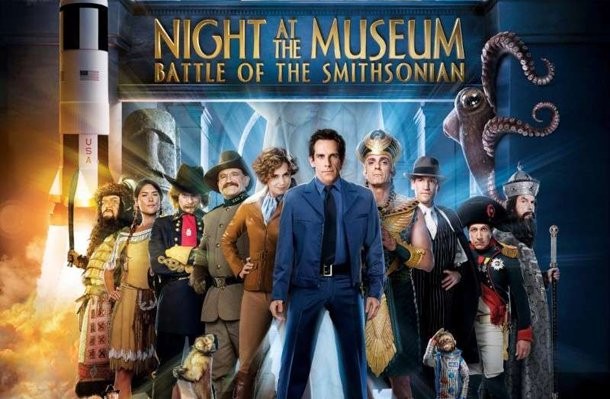Subscribe today to receive the next issue of Game Informer, featuring the Most Anticipated Games of 2026!
A Day At The Museum: How The Smithsonian Is Embracing Games

A
welcome sign of mainstream culture accepting the relevance of
interactive entertainment, The Smithsonian Museum hosted a panel today
highlighting how games have begun to influence even the most traditional
of establishments. The mantra of the Smithsonian is to collect pieces
of significant visual culture, and looking to the future they expect to expand into the video game realm.
Today, the Smithsonian proudly revealed IDEA! The Art of Video Games, an exhibit
planned for the Smithsonian for 2012. The goal of the exhibit will be to
create an exhibition that examines the evolution of video games as an
artistic medium over time and demonstrates how social dialogue, cultural
shift and technology impact the medium. They also hope to establish
video games as a medium worthy of examination, critique and study as an
art form, and to further bring validation and preservation to an
industry that we all care about.
The Smithsonian's interest in games isn't entirely new, however. The institute also elaborated on the implementation of real life games to help their visitors better appreciate significant pieces of history in a more immersive light.
Interactive History
The Smithsonian has a
good deal of visitors, with over 24 million physical attendees and
175,000,000 online visitors per year. Still, they wouldn't mind
seeing that number increase. Part of the initiative to get new visitors
excited about their offerings has been exploring interactive
entertainment and educational tools. For several years now the
Smithsonian has used LCD screens to deliver video interviews with
contemporary American artists to visitors. Last year they launched audio
tours created by staff curators that is available for cell phones and
MP3 players. Additionally, the Smithsonian employs a project called the
Citizen Curator, which allows art fans to vote on replacement pieces of
art when a particular piece has been retired.
In 2008 the
Smithsonian took this interactive edge to a new level when Developer
City Mystery approached them about using the museum as the focal point
of an Alternate Reality Game called Ghosts of a Chance. Much to the
surprise of employees, the higher-ups at the museum agreed, a rarity for
a federal museum, especially of one of such caliber. The goal of the
game was to encourage increased exploration of the Smithsonian and to
lure in new patrons.
The narrative of the game involved two young
curators who realize that they were being possessed by 19th century
spirits who had a story to tell. The goal of the player was to help
solve a mystery and put their souls to rest. The game unfolded over six
weeks of activities. Early challenges involved players submitting photos
of their eyes in the vein of a famous painting. Next they were asked to
call in and record their voice reading a Shakespearean incantation.
Story elements and clues were revealed through YouTube videos and the
fake profiles of the young curators on MySpace, Facebook and more.
Additionally,
the museum got involved on a local scale. The Smithsonian announced
that they planned to hold an exhibit to help put the ghosts at peace,
the catch being that the players themselves had to create the art and
objects for the show. The pieces were even added to the official
Smithsonian database on a temporary basis, another
previously unheard of act. Several other local events were held, one that allowed
players access to the behind the scenes areas of the anthropology museum
where they were trained to identify the gender and age of skeletal
remains, before having to identify two unnamed skeletons on their own.
Fake forensic reports were even created for the owners of the mysterious
bones.
The event culminated in a display of real art and a five
hour multimedia scavenger hunt at the museum. All in all, around 250
people came to play the game in person, with over 6000 people playing
online. Many of them expressed a deeper connection with the art and the
museum, and a sense of discovery that they felt through the event. The
event was so popular that another one has been planned, this one with
the spirits returning to haunt paintings.
Capitalizing on the
success of the ARG,
the Smithsonian has moved forward to further embrace games in the
museum. Now they host a choose your own adventure style guided tour that
uses text messages to direct people throughout the museum.
Additionally, they have tailored audio tours that allow people to see
pieces in the museum that are most likely to fall in line with their
interests. The Smithsonian also announced that they are working on a Facebook game focused
on the idea of collecting and exhibiting art, and another ARG called Pheon.
We hope that the Smithsonian's
efforts to honor video games acts as a barometer for the future, as we would love to see this
trend continue in other institutions.
Be sure to check out the GDC 2010 hub page for quick access to more news and hands-on impressions from the event.








